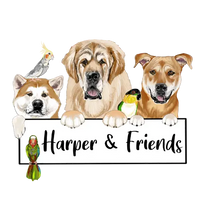Importance Of Rotating Your Pets Food
If you look through the reviews on Amazon or Chewy you will find countless examples of people talking about how their dog or cat has been doing great on this or that food for year’s.
My dog ate this food for at least 5 yrs.
My pup has been on this food for over 3 years and has done so well
While I haven’t seen any large surveys looking at how often owners are rotating or how long they are kept on the same diet specifically, It has been in the purview of other studies.
In a paper published in 2018 on DCM in Golden Retrievers the researchers found that the owners of 22 of the 24 dogs were feeding the same food for a minimum of 182 days (6 Months) a max of 3558 days (9.5 Years) with the median being 814.5 days (2.31 Years). One owner did not report the length of time while the other remaining owner said several years.
In one survey, 3298 Respondents, they were asked true or false “I purposely rotate my dog’s dry food to provide variety”
Only 55.7% of respondents marked true. More people in France: 64.4%, Germany: 64.9%, UK: 61.6% responded that they rotate their dogs diet to provide variety compared to people in Canada: 45.6%, USA: 41.6%.
There is a common misconception out there that owner should stick to one food or brand. This is something pet food companies want you to believe. It is not true, and it’s a little cruel to our dogs or cats. Would you like to eat the same thing for every meal?
One of the key benefits of rotating between different foods is that it reduces the risk of the dog or cat deciding that they dont want to eat that food anymore because they are bored of it. This can be a stressful situation when a dog or cat decides that they no longer want to eat. By rotating foods you lower the risk of them deciding that they no longer want to eat that specific food any more.
This is also why we strongly encourage rotating between different food toppers so that they don’t become bored. T
The same principle also applies to treats that are high value to your dog. If you are constantly giving that high value treat it will lose its value over time, and then you have to find another high value treat for at least the time being so it can become a high value treat again.
Companies make transitioning foods sound complicated, knowing that a large percentage of the population doesn’t like doing even the most simple of math. You mean I have to figure out what 1/4 of 1/3 cup. Pet Food companies have a strong financial incentive for you to feed their food for the entire lifespan of your pet.
Transitioning Foods
Now properly transitioning foods is important; too fast of a transition can cause GI upset and diarrhea. To ease the transition it can be beneficial to give pre and probiotics before during and after the transition,
Why does it have to be this way? The answer is our pets don’t get a variety. They eat the same thing every day. Their gut becomes accustomed to just that food. So, if you introduce something completely different their body isn’t sure how to react to the new food.
Let say you only ever eat relatively bland food most of the time. Then one day you decide to eat something spicy. What happens isn’t good. If however, you ate the spicy food on a somewhat consistent basis you would eventually not suffer from the same problem.
You may say that isn’t a good example.
If all you ever did was eat Macaroni and Cheese every day, and that was it. Then all of a sudden you decided to eat a steak it would most likely cause you issue. Your gut would become accustomed to only Macaroni and Cheese, and would go into shock over the steak. The reason why we can eat different things every day is because we do eat different foods every day.
If our pets become accustomed to rotating foods, on a semi-consistent basis, their gut microbiome will be better situated to handle the change in food. This in turn helps prevent accompanying diarrhea that can result from transitioning foods too quickly.
A Note on AAFCO Nutrient Standards
Every brand is different. Many if not most companies use the same basic formulas with just minor variations. This goes for all forms of food whether it is kibble, wet, freeze dried, and raw food. The only difference many times is the protein used in the food. Many brands also have ingredient levels that they like to hit. This is one of the primary reasons why we advocate rotating between brands not just foods within a single brand.
At the end of the day every brand formulates their foods to reach the minimum requirements set by AAFCO to be labeled as a complete and balanced food. Many companies do exceed the minimum levels required by AAFCO, However, there can be small and large variations on not just Protein, Fat, Carbohydrates, and fiber levels, but also the levels and ratios of different vitamins, minerals, and amino acids.
The guidelines for the most part are a list of minimums. There are only 8 maximums. Two of which are the maximum ratio of Calcium to Phosphorous and the maximum ratio of Omega 6 to Omega 3s. While there is a minimum ratio for Calcium to Phosphorous there is no minimum for the Omega 6 to Omega 3s. AAFCO Lists 12 different minerals only 4 have maximums. 11 Vitamins 2 have maximums. None of the Amino Acids have maximums. Only the ratio of Omega 6 to Omega 3 has a maximum.
Foods are formulated to meet the needs of most pets or the average pet. The average pet however doesn’t exist. AAFCO’s Nutrient Guidelines are based in large part on the NRC Guidelines. A large portion of the studies used to develop the NRC Guidelines were conducted on Beagles. Are Beagles really the ideal breed to develop nutrient guidelines for all dog breeds? Are they the mythical average dog breed?
Every Dog is different. Every Breed is different. Every Breed evolved in disparate areas, and climates. What do we use to determine the average Breed? Do we use weight to determine the average? Do we use Height? Do we use the average climate of where they evolved? Do we conduct studies on a toy breed, and a Giant Breed and use that to determine the average? Do we use Breeds that evolved in the arctic, and desert and use that to determine the average? There is no Breed or Dog that is the average of all breeds. The same is true of Cats.
Now it would be cost-prohibitive to conduct the amount of research that would be required to develop nutrient guidelines for different breeds. Science should never be static. So while it may be cost prohibitive that doesn’t mean the research shouldn’t be done. While the companies may not have a financial incentives to fund research, the government is funded by our tax dollars and owes us a duty, and by extension our pets a duty. Pet Parents make up 67% of the population. More research needs to be done to determine not what the minimum is to survive, but what is needed to thrive. The fact that our pets are not living longer despite our advances is should not be acceptable. There is some research that demonstrates that the minimum nutrient levels are not adequate for all breeds.
Research does suggest for example that Newfoundlands have a higher requirement for taurine than Beagles. In a study conducted on 216 privately owned Newfoundlands, a giant dog breed with high incidence of idiopathic DCM. Plasma taurine concentration was positively correlated with plasma cysteine and methionine concentrations. Plasma taurine concentration was low in 8% of dogs. Of 9 taurine-deficient clinically evaluated dogs, 3 had DCM that was reversed by taurine supplementation. When given a diet apparently adequate in sulfur amino acids for 3 wk, 6 Newfoundlands, were compared with 6 Beagles. The Newfoundlands had lower concentrations of plasma taurine and cysteine and blood glutathione, lower taurine synthesis, and greater fecal bile acid excretion.
Calories Per Cup
Unfortunately, when feeding our pets many owners only pay attention to how many cups it says. There are owners who will switch foods and continue with the previous feeding amount even though the amount of calories they are receiving is different. We believe that this is a contributing factor when it comes to the rising canine and feline obesity epidemic.
It’s also important to note that the number of calories per cup of food can vary greatly even within brands. For Example Nature Logic Distinction Chicken is 420 calories per cup while Natures Logic Distinction Sardine is only 363 Calories per cup. Whereas Farminas N&D Chicken, Pumpkin and Pomegranate is 399 Calories per cup. Zignature Duck is 384 Calories per cup. Carna4 Duck is 525 Calories. Purina Pro Plan Sensitive Skin & Stomach Salmon and Rice is 467 Calories. Go Solutions Skin & Coat Care Salmon Recipe is 427 Calories Per Cup.
Variety is the Spice of Live
By Rotating foods you are ultimately giving them a broader range of nutrients levels. We believe this is key to properly feeding out pets. It also allows you to get a better understanding on what diet they do the best on.
Maybe your pet does better on a diet higher in fiber. Maybe they do better on a diet with a higher fat content. Maybe they do better on a diet with a lower fat content. Maybe your pet needs a higher level of a certain amino acid, maybe they need a higher level of a certain vitamin or mineral. Maybe they need a lower omega-6 to omega-3 ratio. AAFCO sets a maximum ratio of 30 to 1. The NRC sets the guideline between 2.6 to 1 all the way to 26 to 1.
The problem with nutritional deficiencies and imbalances especially minor ones is they occur over a long period of time and they are not easily detectable. It’s possible that minor nutritional deficiencies that occur over months and years are the cause of some health conditions that we are seeing today. It is possible that these minor nutritional deficiencies or imbalances alter the epigenome.
By rotating foods and brands you are getting a wider range of these nutrient levels. This prevents your pet from getting too much or too little of various nutrients. This in turn could help with correcting possible minor nutritional deficiencies or imbalances that develop over a long period of time. This is also why we recommend rotating between different Treats, Chews, and Food Toppers so that they get a wider range of nutrients. This is also why our food toppers are not just Chicken Breast, Pork Loin, or Beef Sirloin etc, because we feel like it is important to provide a broader range of nutrients.
This is also why our food toppers are not single ingredients.
Recalls
One of the key benefits besides providing more variety is in the event of a recall you aren’t stuck panicking on what food to switch to; because you already have other options that are not only palatable, but they also do well on.
One is none and two is one.
Dog food recalls are a common occurrence so we feel it’s important to not rest on our laurels when we find a food they like and do well on. It’s important to always have a couple back up options preferably from different manufacturing plants because recalls can quickly encompass other brands besides the first one to issue a recall. As a large number of brands use co-packers and private labeling.
A Note on Taurine
DCM is a rising concern of many pet owners. Many pet food companies are now increasing the taurine content of their foods. Many owners are looking to add more taurine to their pet’s diet.
For those interested here is a study that looks at the Taurine Content of different meats, organs, and even some vegetables.


